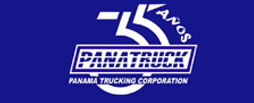The Galapagos Islands, home to some of the world’s most uniquely endemic wildlife species, hosted an IMO international workshop on biofouling management to prevent the spread of invasive aquatic species in Marine Protected Areas (MPAs) and Particularly sensitive Sea Areas (PSSAs). The event (6-9 June) brought together marine biology scientists and related experts from all corners of the world at the Charles Darwin Foundation, an international non-profit organization dedicated to the environmental conservation of the Galapagos archipelago, around 1000km off the coast of Ecuador.
Invasive aquatic species (IAS) are marine organisms that have spread or been introduced beyond their native range – for instance via biofouling on ships’ hulls or other underwater surfaces. The spread of invasive species is recognized as one of the greatest threats to the ecological and economic well-being of the planet because of the serious harm they can do to a new environment. IAS can destroy entire native ecosystems which can cost millions of dollars to economies that rely on the coastal and marine environment such as tourism, aquaculture and fisheries, and because of costly damage to infrastructure. Invasive aquatic species are one of the primary causes of biodiversity loss globally. IMO’s Glofouling Partnerships project is working to address this issue.
The workshop in the Galapagos provided participants from 20 countries with an opportunity to exchange methods and best practices for preventing the introduction of invasive species via ships’ biofouling. One key aspect of the event was the opportunity for participants to witness technology demonstrations in action, such as different methods of in-water inspections of vessels. The practical demonstrations ranged from divers with hand-held cameras, inspections using small drones, and remotely operated vehicles or robots. Samples collected during the demonstrations were then analysed in a lab on-site where further discussions followed.
Throughout the week, group discussions enabled experts to debate possible solutions and ways forward to tackle the biofouling issue.
A report will be published later this year which will include recommendations on areas where additional guidance, research or development is needed.
Read more here here about the issue of biofouling and invasive aquatic species.
See examples of invasive aquatic species here.
A photo gallery of the Galapagos workshop can be found here.
![]()

































